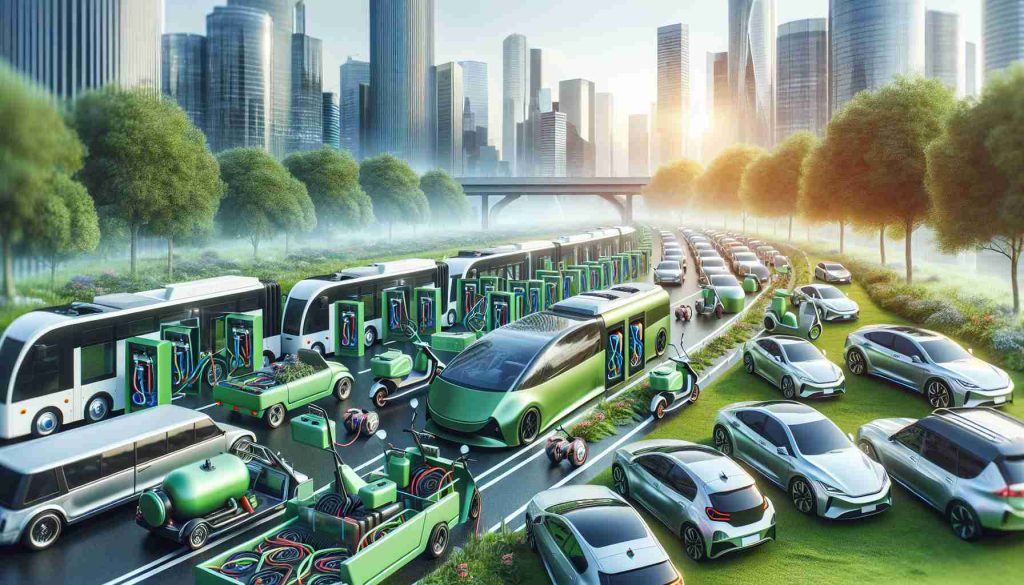
In a significant pivot toward green transportation, the automotive sector is witnessing an electrifying change. The electric vehicle (EV) battery industry is at the heart of this transition and is expected to swell to a market valuation of $365.4 billion by 2031. Lithium-ion batteries, the technological cornerstone that powers this change, offer the advantages of high energy density, lighter weight, and a superior lifespan—qualities that have proven ideal for driving the range and quick charging capabilities of EVs.
Since their 1990s commercial debut, lithium-ion batteries have propelled the success of electric vehicles, with brands like Tesla advancing the technology’s popularity. Demand has surged, investments have flowed, and performance improvements have continued, all contributing to a progressively affordable market.
The push for electric vehicles, particularly those powered by renewable sources, offers vital environmental benefits, such as zero tailpipe emissions, heightened energy efficiency, cutting-edge smart charging techniques for grid stability, and advancements in sustainable battery material research. All these efforts improve the ecological footprint of EVs, giving them an edge over traditional combustion engines.
In 2023, lithium-ion batteries are dominating the industry, securing a 65.8% market share. The commercial sector is keenly interested in electrification, evidenced by the predicted compound annual growth rate (CAGR) of 20.4% for light commercial vehicles. China’s market, with an 18.8% CAGR, underscores the nation’s critical role in the global EV battery demand.
Market growth is spurred by declining cost of battery packs, integration of E-mobility, and technological innovations that promise enhanced performance and driving range for electric vehicles. North America appears set to lead market share by 2031, while Asia Pacific’s robust automotive industry drives demand, expecting a 19.1% CAGR.
Investments and strides in technology from key market players like CATL and Samsung SDI epitomize the vibrant and forward-looking nature of the EV battery market. The synergy between improved energy density, faster charging, cost reductions, and sustainable lifecycle processes underscores the industry’s commitment to environmental responsibility. The segmentation of the market reflects a spectrum of technological needs and advances, carving a path for a cleaner automotive future.
The automotive industry is currently undergoing a transformative shift as the emphasis on sustainability grows and technological advancements make electric vehicles (EVs) more viable. The proliferation of electric cars is driving forward the EV battery sector, expected to reach a staggering $365.4 billion in market valuation by 2031. The lithium-ion battery is at the forefront of this movement, thanks to its high energy density, lightweight, and extended lifespan, which are paramount for extended driving range and fast-charging solutions in EVs.
From their commercial inception in the 1990s, lithium-ion batteries have quickly become synonymous with electric vehicles, with companies like Tesla propelling the technology to new heights. The market has become increasingly accessible as a result of decreasing costs, an influx of capital investment, and ongoing enhancements to the technology.
Electric vehicles contribute to environmental conservation by providing zero-emission transportation options, augmented by innovative smart charging strategies that contribute to grid stability. Research in sustainable battery materials continues to minimize the ecological impact of these vehicles, positioning them favorably against traditional internal combustion engines.
Dominating the industry in 2023, lithium-ion batteries have achieved a 65.8% market share. This is indicative of the commercial interest in eco-friendly transportation, highlighted by a strong projected CAGR of 20.4% for light commercial vehicles. In addition, China is a significant player in the EV battery marketplace, anticipating an 18.8% CAGR, a testament to the country’s pivotal role in the international demand for EV batteries.
The industry’s expansion can be attributed to the falling costs of battery packs, the steady integration of electromobility (E-mobility), and breakthroughs that enhance EV performance and range. By 2031, North America is expected to dominate the market share, with the Asia Pacific region not far behind, driven by its dynamic automotive sector and anticipating a 19.1% CAGR.
Continuous investment and technological progression by major industry figures such as CATL and Samsung SDI reflect the sector’s dynamic and innovative ethos. The market is progressing thanks to improvements in energy density, faster charging times, cost-efficiency, and sustainable life cycles of products. The diverse market segmentation demonstrates a comprehensive range of technological requirements and developments, paving the way for a more sustainable automotive future.
For the latest updates and more detailed information, it’s beneficial to refer to reputable industry analysis and news from international organizations and market research firms.
To understand the broader context and dynamics of the automotive industry and its lean towards electrification, please refer to the following link: International Energy Agency.
Furthermore, it’s worth noting the active issues the industry faces, such as supply chain challenges for raw materials, recycling and life-cycle management of batteries, and infrastructural demands like charging stations. Each of these elements requires attention and resolution as part of the industry’s growth and sustainability strategies.

Jerzy Lewandowski, a visionary in the realm of virtual reality and augmented reality technologies, has made significant contributions to the field with his pioneering research and innovative designs. His work primarily focuses on enhancing user experience and interaction within virtual environments, pushing the boundaries of immersive technology. Lewandowski’s groundbreaking projects have gained recognition for their ability to merge the digital and physical worlds, offering new possibilities in gaming, education, and professional training. His expertise and forward-thinking approach mark him as a key influencer in shaping the future of virtual and augmented reality applications.








